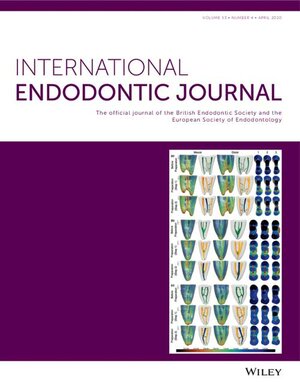Characteristics of vertical root fractures at early stages: Evidence that dentinal microcracks are an experimental phenomenon
Abstract
Aim
The aim of this study was to investigate the characteristics of vertical root fractures (VRFs) at early stages and compare them with previously reported dentinal microcracks.
Methodology
Endodontically treated teeth with vertical root fractures at early stages were collected. The characteristics of these VRFs were evaluated by in vitro observation and micro-CT scanning: (1) the number of fractures (buccal, lingual, mesial and distal were counted separately); (2) vertical extension on the roots (classified into four categories according to cemento-enamel junction and root apex involved or not); (3) the direction of fractures (bucco-lingual or mesial-distal); (4) horizontal extension of fractures (involved the root canal wall or the root surface or both); (5) the width of fractures (measured at the widest site on the axial micro-CT image); and (6) the location of the widest fractured site on the root (coronal third portion, middle third portion and apical third portion).
Results
A total of 28 vertical root fractures at early stages were collected in this study, involving 30 roots with a total of 51 fractures. All fractures involved the middle portion of root; all fractures were bucco-palatal/lingual and extended from the root canal wall to the root surface. The maximum width of these fractures were <150 μm, and widest fractures may be at the coronal, middle or apical third portion of the tooth root.
Conclusions
All vertical root fractures involved the middle portion of root, initiated from the root canal wall and directed buccal-lingually. The fractures were irregular and tortuous, with fracture widths exhibiting considerable variability. These characteristics help us to have a better understanding of the initiation and development of VRFs, and also supply evidence dentinal microcracks are an experimental phenomenon.

 求助内容:
求助内容: 应助结果提醒方式:
应助结果提醒方式:


